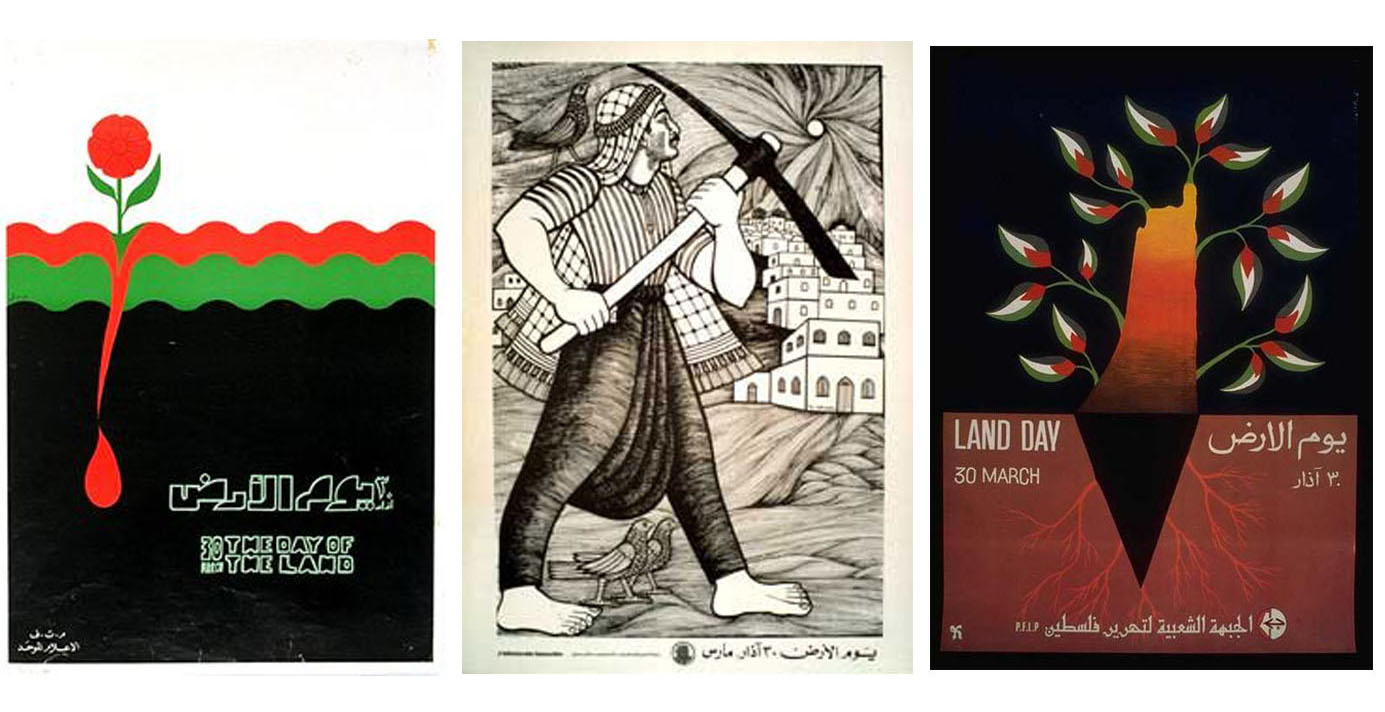Note: This was published on May 15, 2018. If you’re looking for information about the 2023 violence in Israel and Gaza, click here.
In the past few days, the news coming out of the Middle East is overwhelming: What is happening in Gaza? What is Israel doing? Why are protestors being killed? What does this have to do with Trump moving the U.S. embassy to Jerusalem? What the hell is Ivanka doing there? How are American Jews reacting? How should I react?
We know you have a lot of questions, and we know turning to Twitter can be too much to process, and often, news sites presume a lot of prior knowledge.
We’re here to break it down as best as possible. We realize we can’t be comprehensive, and our perspective is shaped by English-language sources. But here goes:
History of Land Day
On March 30, 2018, protestors started gathering on the Gaza border. This was in commemoration of “Land Day,” a date chosen by Palestinians to commemorate the deaths of six Israeli Arabs on March 30, 1976. That date was, as Jewish Telegraphic Agency (JTA) reported back in 1976, “the first Arab general strike in Israel’s history, called… to protest the government’s planned expropriation of Arab land in Galilee.”
Over the years, Land Day has turned into an annual day of protest and commemoration by Palestinians and Israeli Arabs. As JTA explains, “On previous Land Days, pro-Palestinian activists have called for a ‘global march to Jerusalem’ from the West Bank, Gaza Strip, Egypt, Lebanon, Jordan and Syria.”

Most Land Day protests center on the “right of return,” which is the most contested and intractable issue in the Israeli-Palestinian conflict; the idea is that Palestinians living in the West Bank and Gaza and elsewhere have the right to return to their country of origin (what is now the State of Israel).
The numbers of just how many Palestinians would return to Israel is hotly contested (obviously) — how do you count the number of refugees who lost their homes in the 1948-49 war? Do their descendants count? We’re not going to dive into this thorny issue here, but the concept of “right of return” is really important to understand.
In 2018, Palestinian protestors massed on the border fence between Gaza and Israel for the annual Land Day observance. As JTA reported, an Arab Knesset member stated, “The march to the border fence is meant to be a form of nonviolent protest. It is to be followed by six weeks of protest at the border until May 15.” The six weeks between March 30 and May 15 have seen protests and clashes between Palestinians and Israeli forces (we’ll get to this below). They also proclaimed these six weeks would build to a “Great March of Return” (see: the idea of “right of return,” above).
Why May 15? In the Arab world, May 15 is remembered as Nakba (catastrophe) Day. Commemorations of Nakba Day began in 1998, because it’s the day after Israel was declared a state (May 14, 1948).
Still with us?
“March of Return” Protests
On Land Day 2018 (March 30), 30,000 Palestinians massed along the border in six different protest spots. The main protest spots in Gaza are Rafa, Khan Younis, el-Bureji, Gaza City, and Jabalya. They were protesting for the right of return and against Israel and Egypt’s blockade of Gaza, which has been in place for over a decade.
Ahmed Abu Ratima, the main organizer of the protests, said that the inspiration for the protest started with a Facebook post in 2011, where he wrote, “What if 200,000 Palestinians headed peacefully to cross the border, while raising a poster that says they only want to go back to their land? What would happen?”
Initially promoted as a six-week campaign of peaceful non-violence, it soon turned violent as Hamas co-opted the protests. (Some quick reminders: Hamas is the terrorist organization that controls Gaza; Israel withdrew from Gaza in 2005; there were two wars in Gaza in 2009 and 2014; the Palestinian Authority, an organization separate from Hamas, controls the West Bank.)
Hamas leader Ismail Haniyeh said in a speech on March 30 that, “We are here to declare today that our people will not agree to keep the ‘right of return’ only as a slogan.” Another senior Hamas official, Khalil al-Hayya, said, “We have waited for too long to return to the lands from which our grandparents were expelled 70 years ago.”
On the first day of protests, Israeli forces killed at least 12 Palestinians. The IDF spokesman Ronen Manelis said the IDF faced “a violent, terrorist demonstration at six points,” and maintains those killed were engaged in violence.
As The New York Times reported on April 15, “By embracing the protests, Hamas cannily aligned itself with a popular movement that became even more popular as it took shape — and that generated an outpouring of international support when Israel responded with gunfire, killing dozens of Palestinians, almost all of them unarmed.”
The protests swelled on every Friday over the course of the six weeks.
May 14
The day that the U.S. Embassy, previously located in Tel Aviv, opened in Jerusalem, over 50,000 Palestinians protested at the border and attempted to cross the fence into Israel. Israeli soldiers responded with gunfire, leading to a deadly day. At least 58 Palestinians are reported dead, killed by Israeli forces, with over 1,360 injured.
Abu Ratima (the organizer, remember him?) wrote an op-ed for the New York Times titled “I Helped Start the Gaza Protests. I Don’t Regret It” where he stated, “Desperation fuels this new generation. We are not going back to our subhuman existence. We will keep knocking at the doors of international organizations and our Israeli jailers until we see concrete steps to end the blockade of Gaza.” Abu Ratima explains he hopes the protests stay non-violent, but “when a movement becomes this large… it cannot be completely controlled.”
Speakers urged protestors to get closer to the border fence, saying, “Now we are heading to Jerusalem with millions of martyrs. We may die but Palestine will live.” Al-Hayya (Hamas’s deputy chief in Gaza) said of Monday’s demonstrations that the purpose was to both “draw the map of return in blood” and protest the embassy.
And so we turn to the U.S. embassy and Trump…
While this horrific violence occurred in Gaza, the U.S. Embassy opened in Jerusalem. President Trump didn’t attend, but his daughter, Ivanka, and her husband, Jared Kushner, were there. Jared and Ivanka are both Orthodox Jews; they were part of the official U.S. delegation (headed by deputy secretary of state John Sullivan). Ivanka wrote on Instagram on May 12, “With great joy, I am returning to Jerusalem…. We look forward to celebrating Israel’s 70th anniversary and the bright future ahead. We will pray for the boundless potential of the future of the U.S.-Israel alliance, and we will pray for peace.”
Emma O. Green wrote in The Atlantic, “The celebration in Jerusalem — a victory claimed by both American Christian and Jewish groups — was a disorienting contrast to the violence in Palestinian territories.” Many Palestinians see the date of the embassy opening as a deliberate provocation.
Many took to Twitter to tweet out images of Ivanka Trump and Jared Kushner, smiling, opening the embassy, next to images of the violence in Gaza.
Left: #Jerusalem
Right: #Gaza(Pictures taken at the same time this afternoon) pic.twitter.com/0ySzaGjQC9
— Patrick Galey is on @patrickgaley.bsky.social (@patrickgaley) May 14, 2018
Michelle Goldberg wrote in The New York Times, “The juxtaposition of images of dead and wounded Palestinians and Ivanka Trump smiling in Jerusalem like a Zionist Marie Antoinette tell us a lot about America’s relationship to Israel right now. It has never been closer, but within that closeness there are seeds of potential estrangement.”
Some took issue with this juxtaposition, like Liel Liebovitz in Tablet: “Hamas won… by giving the Western media the opportunity to juxtapose pictures of Donald Trump and his family with pictures of dead Palestinians. In exchange for those precious images, the media was more than happy to erase the facts that Israel withdrew from Gaza in 2005, that the attacks on Israel’s borders have been going on for weeks, or that Hamas is an evil, anti-Semitic, misogynist, homophobic, theocratic cult. The chance to bash Trump and demonize Israel was worth whitewashing any number of crimes — and the more Palestinians Hamas sent to die, the better the photo op.”
The IDF is insistent that the protestors are violent and Hamas-controlled.
Hamas is coercing Gazans to risk their lives.
Read more here: https://t.co/m4rPW57EA9 pic.twitter.com/o5R9L9irDq— Israel Defense Forces (@IDF) May 14, 2018
The IDF stated, “Hamas terrorist organization plans to send armed terrorists, among 250,000 violent rioters to swarm and breach Israel’s border with Gaza and enter Israeli communities. Hamas plans to carry out a massacre in Israel. The Israel Defense Forces will not let them.”
But many are sharing images of young teenagers, disabled Palestinians, and others killed in the violence. They can’t all be militants.
Israelis can hold Hamas responsible for using civilians as human shields; likewise, Israel’s actions are still killing Palestinians.
Hamas blames Israel, Israel blames Hamas, Fatah doesn't like Hamas, Hamas doesn't like Fatah, Israel also accuses Fatah: meanwhile young people die or are maimed forever simply because they are the victims to all sides and have nothing to look forward to in life
— Hoda Abdel-Hamid (@HodaAH) May 15, 2018
This thread from the former U.S. ambassador to Israel is also worth a read:
8.Having squandered huge resources on rockets, which Israel can intercept, &tunnels, which Israel can detect &destroy, Hamas has nothing left to prove its relevance &try to relieve pressure, including crushing humanitarian conditions, than to throw its own people into harm's way.
— Dan Shapiro (@DanielBShapiro) May 14, 2018
Shin Bet, Israel’s security service, said in a statement, “From the information we have, it appears Hamas is encouraging and sending protesters to the border fence in order to carry out violent acts and damage security infrastructure.” Hamas has begun to confirm that many of its militants were killed.
Good of Hamas to confirm it was using a protest as cover to get combatants across the border and that they were a non-trivial # of the ppl killed yesterday, I'm sure folks on Twitter will internalize this information and change their analyses accordingly https://t.co/d5IMslhOph
— Armin Rosen (@ArminRosen) May 15, 2018
(Rosen quote-tweeted a screenshot of Hamas mourning their martyrs. His tweet is sarcasm, clearly, but Twitter has been a terrible source of information due to the lack of nuance and unverified claims. Many agree that the coverage of the May 14 protests ignore the build-up and lose much nuance.)
Back up a second: Why was the embassy moved to Jerusalem?
Israel and some Jewish groups have long backed moving the U.S. embassy from Tel Aviv to Jerusalem. But some political observers say Trump’s Evangelical Christian base was the main driver behind the decision to make the move.
Notably, the pastor chosen by the Trump administration to give the prayer at the opening ceremony of the new embassy believes that the Jews are going to hell.
The decision to move the US embassy in Israel to Jerusalem is not about supporting Jews—if it were, Trump would not have invited an evangelical pastor who has a Farrakhan-like hatred of Jews to speak.
This one is pretty easy: if ya talk about Jews burning in hell, ya hate Jews.
— Sophie Ellman-Golan (@EgSophie) May 14, 2018
This is based on evangelical Christian ideas about the second coming of Jesus Christ (oh yes, we have to get into this, unfortunately). As Elizabeth Oldmixon wrote in Vox, evangelicals believe there will be a future golden age where “Christ reigns on Earth…. but before Christ will return, there will be a tribulation where Christ defeats evil. There will be natural disasters and wars, and perhaps an Antichrist, as the book of Revelations notes. Then at the end of that period, the people of the Mosaic covenant, including the Jews, will convert. Then after their conversion, the great millennium starts.” Oy vey.
Fox News host: Trump fulfilled a "biblical prophecy" by moving the US embassy to Jerusalemhttps://t.co/TFvtWG7ZlR pic.twitter.com/FX9QCtK2ZJ
— The Hill (@thehill) May 15, 2018
But, crucial to all of this is that the Jews have to all gather in Jerusalem (referred to as the “Ingathering of the Exiles”) before they can convert and/or die so Jesus will return.
Yet, as Emma Green wrote in the Atlantic, many Evangelical Christians view Israel as a fulfillment of prophecy, not as an “an end-times fantasy.” Of course, there were many Jews who supported the move as well. JTA’s editor-in-chief Andrew Silow-Carroll gives a quick recap of the embassy move here (important to note this video was published before the recent protests, when things were “relatively calm”):
There’s so much to unpack, we know, but let’s switch gears and dive into the reaction to the Gaza protests and the deaths…
Reactions
Jared Kushner, in his speech at the embassy opening, said, “Those provoking violence are part of the problem and not part of the solution,” keeping in line with the Trump Administration’s perspective. As White House spokesperson Raj Shah stated, “The responsibility for these tragic deaths rest squarely with Hamas. Hamas is intentionally and cynically provoking this response. And as the secretary of state said, Israel has the right to defend itself.”
Other pro-Israel commentators point out that Israel, like any other state, should get the opportunity to defend itself.
What's missing from the anti-Israel echo chamber are real solutions to the border riots. What they're effectively saying is that Israel should tolerate the breach of the fence, risk terrorists kidnapping soldiers and slaughtering civilians.
For what? Sympathetic headlines?
— Julie Lenarz (@MsJulieLenarz) May 15, 2018
What was Israel supposed to do? Is there an answer?
I think you're always going to have tension in the Middle East when there's people who want to kill the Jews and Jews who don't want to be killed and neither side is willing to compromise.
— Frank J. Fleming (@IMAO_) May 14, 2018
Perhaps commentators shouldn’t be looking at the decisions made on May 14 and around the protests, but the structural issues that created the crisis. As a columnist wrote in the Forward, “Long before Israeli soldiers decided whether to shoot at protesters, Israeli leaders decided to bar farmers in Gaza from exporting spinach, potatoes and beans. They decided to bar fisherman in Gaza from fishing beyond six nautical miles. They decided to bar students in Gaza from leaving the Strip to study, to bar spouses from leaving to legally join their husbands or wives in the West Bank, to bar grandchildren from leaving to attend their grandparents’ funerals. They decided to bar people in Gaza from importing the spare parts necessary to rebuild the Strip’s electricity grid.”
T’ruah, “the Rabbinic Call for Human Rights,” released a statement: “Israel certainly has a right to defend its borders. However, even in military conflict, attempts must be made to avoid unnecessary loss of life…We encourage Israel to deploy all of the creativity of the start-up nation to ameliorating this crisis, refraining from escalating violence at the border, and ultimately working toward a two-state solution that will keep both Israelis and Palestinians safe.”
Many American Jews stress the difference between being “pro-Israel” and supporting the current administration:
A friend just provided this important reminder:
"Just like here, being a patriot doesn't mean supporting Donald Trump. As Jews, being pro-Israel does not mean supporting Netanyahu, his government, or his policies. Many Israelis don't—and we don't either."
— . (@MarisaKabas) May 14, 2018
Others are calling on American Jews to stand against Israel’s actions:
https://twitter.com/DavidKlion/status/996390864103632896
Elsewhere, many reacted to the news with repeated calls for an embrace of the BDS Movement.
If you’re horrified by what you’ve seen today and you’ve been apathetic or outright unsupportive of BDS (boycott, divest & sanction) to fight apartheid policies and oppression of Palestinians, today is the day to change that position.
— Hend Amry (@LibyaLiberty) May 14, 2018
BDS is controversial, no doubt; it can quickly dive into anti-Semitism and paints in broad strokes an Israeli community that has many dissenting voices, but we don’t have the time to go into all that right now. (Okay, one thing: as Zack Beauchamp wrote eloquently in Vox today, “Many American Jews see BDS as an anti-Semitic attack rather than a legitimate political campaign. Not only is the movement singling out the world’s only Jewish state, when there are many countries with worse human rights records, it is working to destroy the sense of ‘us’ at the heart of the modern Jewish community, one that Jews have worked so hard to build up after the Holocaust.”)
On the international level, Turkey, South Africa, Ireland, and Belgium recalled their ambassadors from Israel.
And of course, celebrities are weighing in, often without nuance or background information, just vague hashtags:
https://twitter.com/GiGiHadid/status/996420206854656000
And, whether or not you agree with the validity of the comparison, many on Twitter have been comparing what’s happening in Israel to what happened under the apartheid regime of South Africa.
https://twitter.com/ztsamudzi/status/996043953592979456
Others still point out that even if Hamas is encouraging Palestinians to approach the border fence, they do so knowing they could die.
The IDF have been clear as crystal for weeks now that anyone who approached the separation fence would face live fire. The fact that thousands of Gazans approached it knowing this tells you how bleak they consider their existence to be.
— Julia Macfarlane (@juliamacfarlane) May 14, 2018
We could go on and on — the number of takes and opinions are endless — but the point of this piece is to make things easier to understand, not cause your head to explode. We hope it helped.



